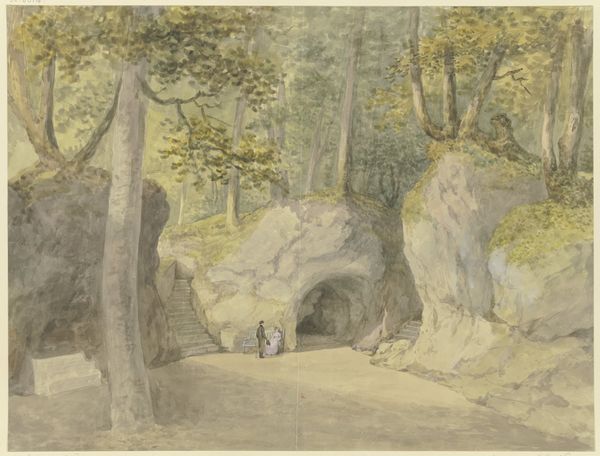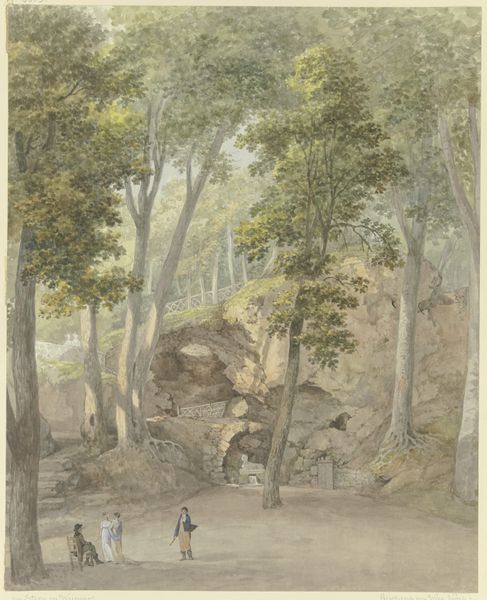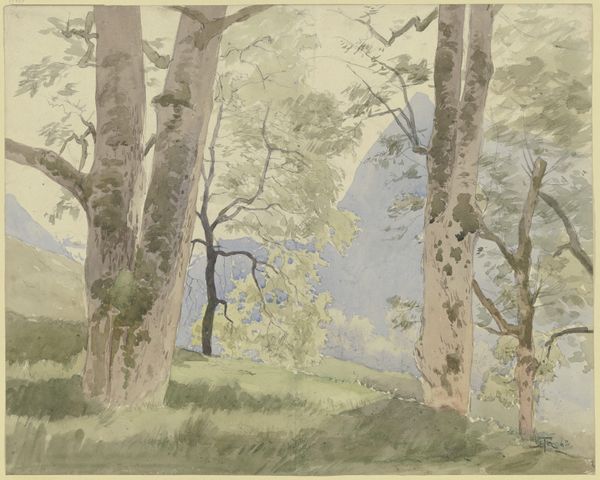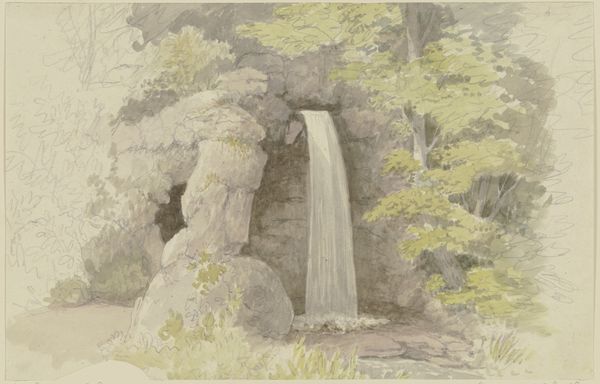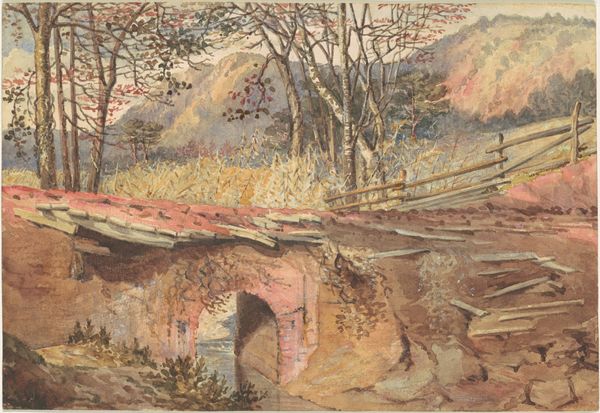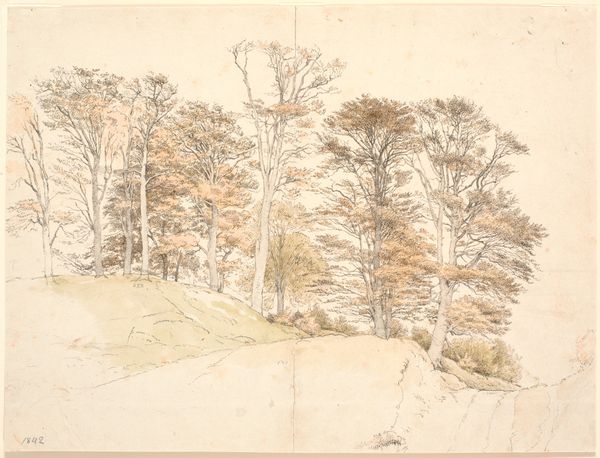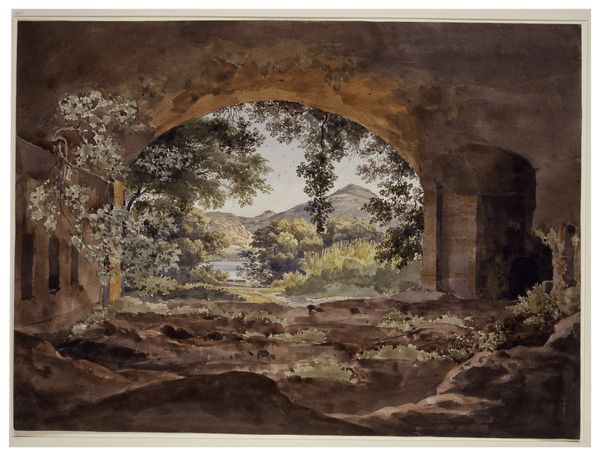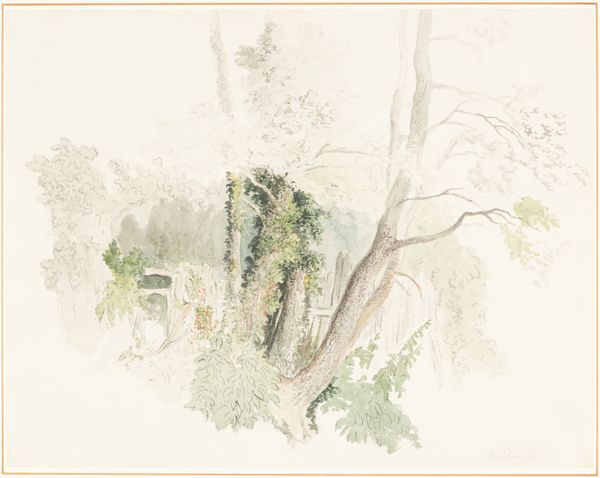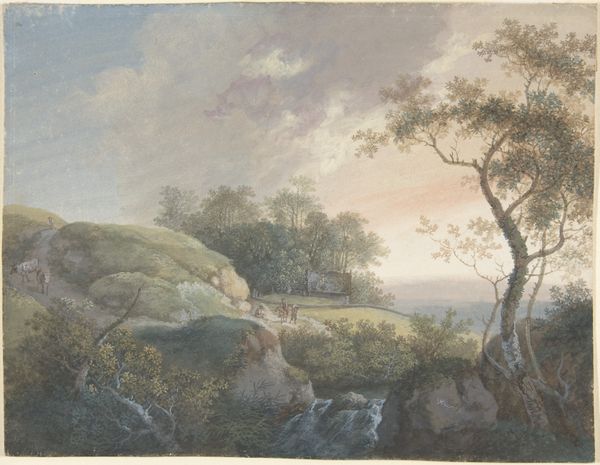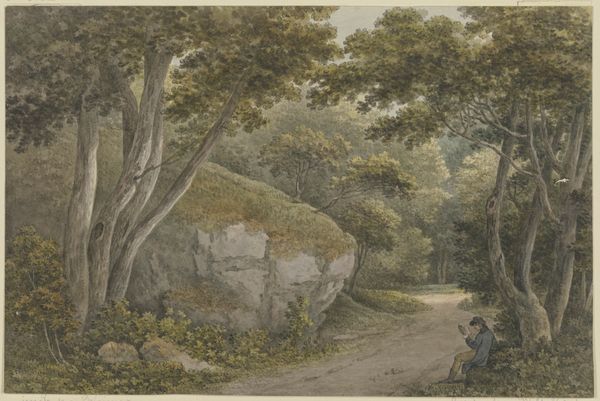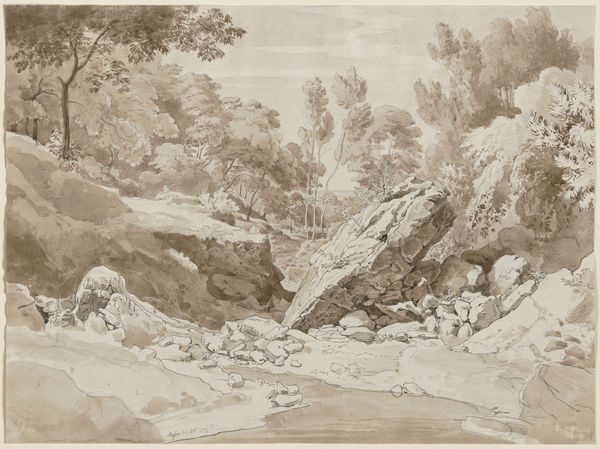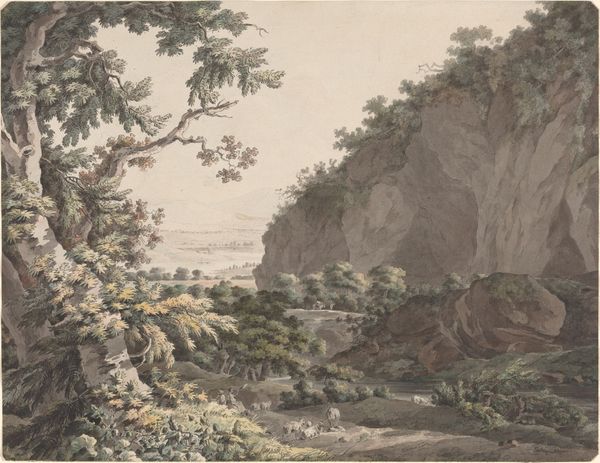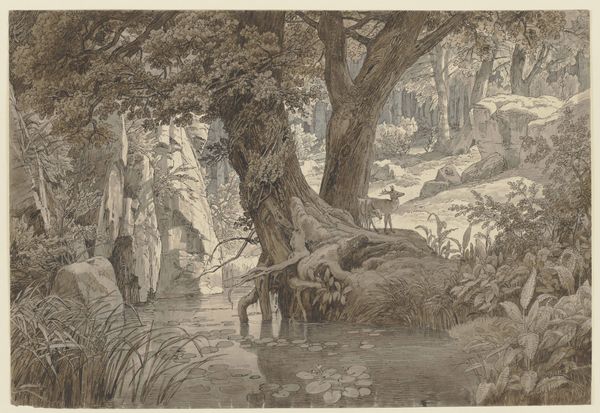
drawing, painting, watercolor, graphite
#
drawing
#
neoclacissism
#
painting
#
landscape
#
watercolor
#
graphite
#
architecture drawing
#
watercolor
Copyright: Public Domain
Editor: So, here we have "Flußtal mit felsigem Ufer, im Hintergrund Gebirge," a watercolor and graphite drawing made around 1801 by Georg Melchior Kraus. There's such a sense of stillness and tranquility in this landscape. What stands out to you? Curator: I'm drawn to the ways in which this seemingly serene landscape intersects with the social and political undercurrents of its time. Consider the Enlightenment ideals of Kraus' era and how the relationship between humanity and nature was being re-imagined. What kind of power structures do you see reflected, or perhaps challenged, within the composition? Editor: I guess the small size of the figures could indicate that humanity is inferior to nature? Curator: Exactly! And think about who had the privilege to contemplate such idealized landscapes. Was this vision accessible to all, or was it largely the domain of the elite? Moreover, during this period, landscape art served to reinforce ideas about nationhood. Do you see elements in this drawing that contribute to a particular understanding of German identity? Editor: That’s fascinating. I hadn’t thought about it in terms of national identity, but I see how the romanticization of the German landscape could foster a sense of cultural unity and pride. It definitely feels like this landscape isn't simply 'nature' - but more an idea of it, or even propaganda about it. Curator: Precisely! Consider, too, how women, especially female artists, navigated and were often excluded from these landscape traditions. Editor: So, beneath the beauty, there's a lot to unpack about class, gender and power. This art is political even if it doesn't look that way at first glance. Curator: Indeed! It challenges us to see art not as separate from society, but woven into its very fabric.
Comments
No comments
Be the first to comment and join the conversation on the ultimate creative platform.
